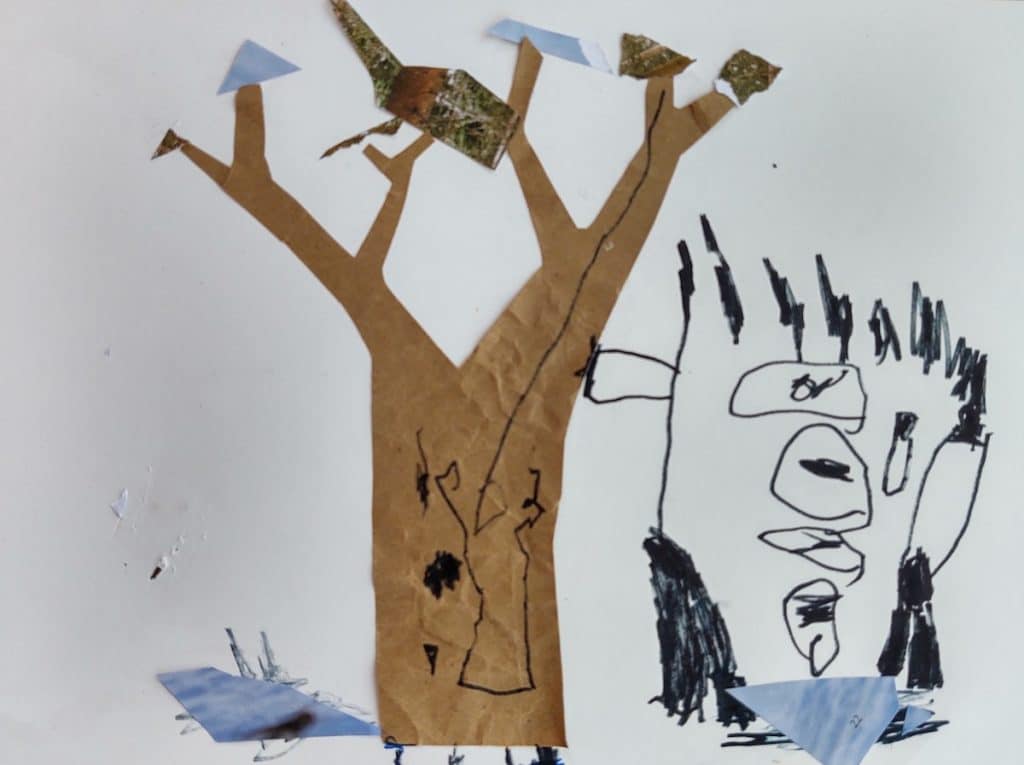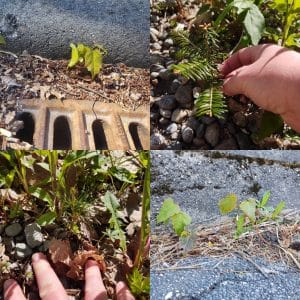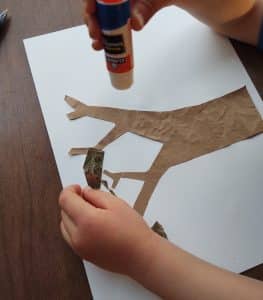
As we’ve gotten better acquainted with the trees we pass on our daily walks around the neighborhood, I love that they’re starting to stand out as individuals. In the past I’ve talked about spotting differences as a precursor to identifying species, but those same skills are what have led to noticing that one oak tree in a row of three has a knot on its trunk. Now we look for the “bellybutton tree” every time we walk that stretch of road.
Watch this week’s video to learn an easy-to-replicate leaf shape game, then read on for some more ways to celebrate and learn about trees!
When you are OUTSIDE:

- How many baby trees (seedlings) can you find? The trees that tower over us, and even spindly saplings, grew from the lucky few seeds that landed in a spot with enough space and sunlight and escaped being eaten. Most trees produce tons of seeds to overcome these slim chances, which is why you’ll see tree seedlings popping up everywhere right now.
- Use a little mud and some imagination to give a tree a face by sticking rocks, grass, or other items to the trunk. Visit Tinkergarten for the full instructions and some great example photos.
- There is something so special about stopping to look up at a tall tree, and yet it’s easy to forget to take the time. Try lying under or leaning against a tree for a few minutes while you ponder the canopy. What do you see? What do you wonder? If you have access to a climbable tree and haven’t already embraced tree climbing, now would be a great time to do so!
To keep exploring trees INSIDE, try:
- Cumulative songs and stories are a fun way to practice sequencing and other early literacy skills, and there are some great ones featuring trees. Once your family has mastered the classic “The Green Grass Grows All Around,” you can play around with making the song longer or shorter, or even try substituting in other wildlife!
- Try a little tree-inspired guided movement. You can describe the life cycle of a tree as it grows from tiny seed to tall tree, encouraging children to stand tall and remain rooted to the ground as they sway in the breeze and spread their branches. For some true tree yoga, you can practice tree pose.
- Make some tree art! I like to start by cutting a trunk shape out of butcher paper or a paper bag. Crumple it a few times for bark-like texture before smoothing it out and glueing it to paper. From there, you can add leaves cut out of magazine pages, draw wildlife in the branches, or design a treehouse. If you’re up for a really big project, try making a giant tree on the wall that you can add to over time.

